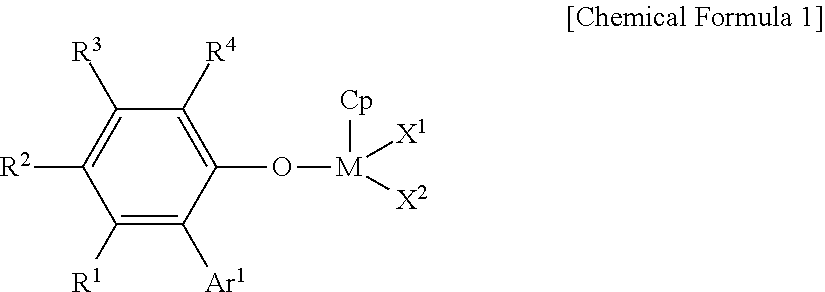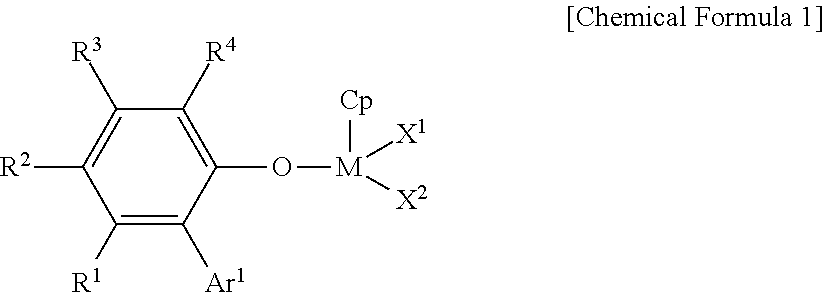Ethylene-propylene-diene copolymer production method
a technology of ethylenepropylene and ethylene, which is applied in the direction of catalyst activation/preparation, physical/chemical process catalysts, chemical/physical processes, etc., can solve the problems of limiting the manufacturing process, reducing the ability of the catalyst, and low catalyst activity, so as to maintain the activity of the catalyst and the effect of catalyst activity
- Summary
- Abstract
- Description
- Claims
- Application Information
AI Technical Summary
Benefits of technology
Problems solved by technology
Method used
Image
Examples
example 1
1L n-hexan was added to a stainless steel reactor having 2L volume, and then 1.4 g improved methyl aluminoxane-7 (AKZO NOVEL, mMAO-7) was injected to the reactor. And then 0.76 of the weight rate of propylene / ethylene adjusting the initial composition was injected until the pressure of the reactor becomes 5 kg / cm3, and then the temperature of the reactor was heated up to 80° C. The reaction was started by successively injecting 5 uM bis(2-penylphenoxy) (pentamethylcyclopentadienyl) titanium (IV) methyl and 50 uM triphenyliumtetrakispentafluorophenylborate (99%, Boulder Scientific). When processing the reaction, ethylene and propylene were continuously supplied according to the initial composition, so that the pressure in the reactor was maintained at 5 kg / cm2. Above 20° C. of reaction temperature was increased due to the exothermic reaction when the reaction began to start, and after 15 minutes, the reaction was stopped by injecting oxygen. After the polymerized solution was precipi...
example 2
The same method for Example 1 was used except that 4.1 g 5-ethylidene-2-nobonene (Sigma Adrich) that is a polyene monomer was injected to abtain 96 g polymer. The weight average molecular weight of the polymer was 70,000 (g / mol), and the distribution degree of the polymer was 2.55. In addition, the ethylene content in the polymer through the infrared spectrophotometer was 64%, and ENB content was 4.5%.
example 3
The same method for Example 2 was used except that the starting temperature of the polymerization was 120° C., to obtain 90 g polymer. The weight average molecular weight of the polymer was 65,000 (g / mol), and the distribution degree of the polymer was 2.8. In addition, the ethylene content in the polymer through the infrared spectrophotometer was 66%, and ENB content was 4.2%.
PUM
| Property | Measurement | Unit |
|---|---|---|
| temperature | aaaaa | aaaaa |
| mole ratio | aaaaa | aaaaa |
| ozone resistance | aaaaa | aaaaa |
Abstract
Description
Claims
Application Information
 Login to View More
Login to View More - R&D
- Intellectual Property
- Life Sciences
- Materials
- Tech Scout
- Unparalleled Data Quality
- Higher Quality Content
- 60% Fewer Hallucinations
Browse by: Latest US Patents, China's latest patents, Technical Efficacy Thesaurus, Application Domain, Technology Topic, Popular Technical Reports.
© 2025 PatSnap. All rights reserved.Legal|Privacy policy|Modern Slavery Act Transparency Statement|Sitemap|About US| Contact US: help@patsnap.com



